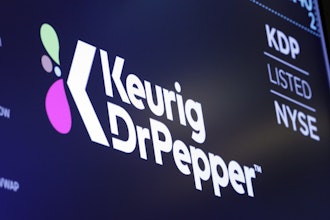The Industrial Internet of Things (IIoT) is revolutionizing how food manufacturing facilities operate, from processing to building maintenance and everything in between. Food and beverage companies have access to more data than ever before, and that’s helping them make more informed decisions.
Internet-connected sensors are the “eyes and ears” in a food plant, collecting all the data that makes those insights possible. These devices can measure a variety of inputs from electrical currents to vibrations to air temperature.
Stellar installs sensors in many of the modern facilities we design and construct today, but many owners have the same question: What exactly can I measure?
Let’s look at a few ways sensors can be used in your food plant:
Measuring
You can’t control what you don’t measure, and in a connected manufacturing facility, measurement starts with sensors. To get the most out of sensors, approach the selection and location from a cost control perspective.
1. Utility usage by product — Sensors at each branch of a utility can measure use by product line or product. Utility point-use and line usage can assist food processors looking to understand fixed and variable production costs. Analysis of this data with production data can help determine the optimal product mix to maximize profits.
2. Hidden quality drivers — With the sensor technology available today, individual pieces of equipment and facility conditions can be monitored to provide a wealth of information. Analysis of factors such as air and product flows and temperature, along with product quality data, can reveal underlying correlations and hidden drivers of quality.
Monitoring
Measuring is the first step, but monitoring needs to occur to coordinate equipment and personnel to ensure that the facility runs properly and efficiently. Monitoring and the accompanying automated controls aggregate sensor data into a system for fault response. Lowering response times and raising visibility reduces cost and quality impact from improper operating conditions.
- Makeup air unit (MAU) or exhaust fan (EF) failure — Often, MAUs and EFs are interconnected to intentionally ensure they work together. When failures occur, monitoring systems send an alert notifying other equipment and/or personnel of the situation and automatically rebalance until the required maintenance is carried out.
- HVAC air pressure — A significant decrease in air pressure within your HVAC system or ductwork can signal a blockage or filter problem. A dedicated sensor can detect this pressure change, making routine air filter changes easy to track. A monitoring system that alerts technicians to a filter problem can help avoid unscheduled downtime and unwanted quality issues.
- Motor vibrations — If a motor is vibrating beyond its historical norm, a sensor can notify the equipment and/or plant personnel that something is moving toward failure and that the motor requires attention. Such a warning allows maintenance to address the problem as a scheduled task rather than waiting until a failure occurs during a production run.
- Leaking pipes — You can install moisture-detecting sensors to detect pipe leaks in your facility. By the time most leaks are visible, substantial damage has already been done below the surface. Sensors can alert you to otherwise hidden leaks faster than ever before.
Maximizing
Maximizing the value of a connected facility built with IIoT data in mind goes beyond measuring and monitoring. Predictive (and deferred) maintenance plans can reduce the cost of both unscheduled downtime and excessive preventative maintenance. Facilities should work toward an IIoT strategy that drives a single “version of the truth” across all systems within a facility.
The Future of Maintenance: Predictive Analytics & Artificial Intelligence
As sensors and building management systems become more connected, the true power of the data they collect comes into play. When sensors can collect data from multiple units of the same model across different locations, that aggregate data becomes more valuable than the individual data. In the big picture, that level and amount of data unlocks the potential for predictive analytics, machine learning and the applications of artificial intelligence to maintenance decisions.
This can be incredibly valuable for a large company with multiple facilities. For example, decision makers at the corporate headquarters could analyze performance data across multiple locations to determine which refrigeration units malfunction more frequently, allowing them to make more informed equipment investments moving forward.
This example only scratches the surface of what’s achievable as food plants truly begin harnessing the data they create. The possibilities are endless.
Michael Griffith is a director of business analytics at Stellar.






















